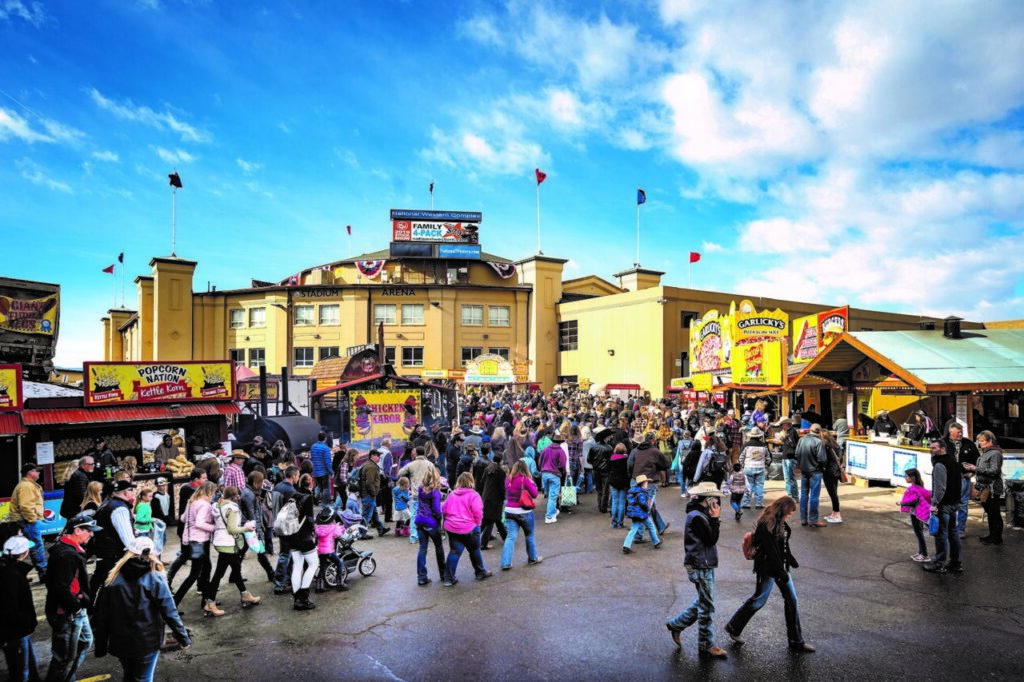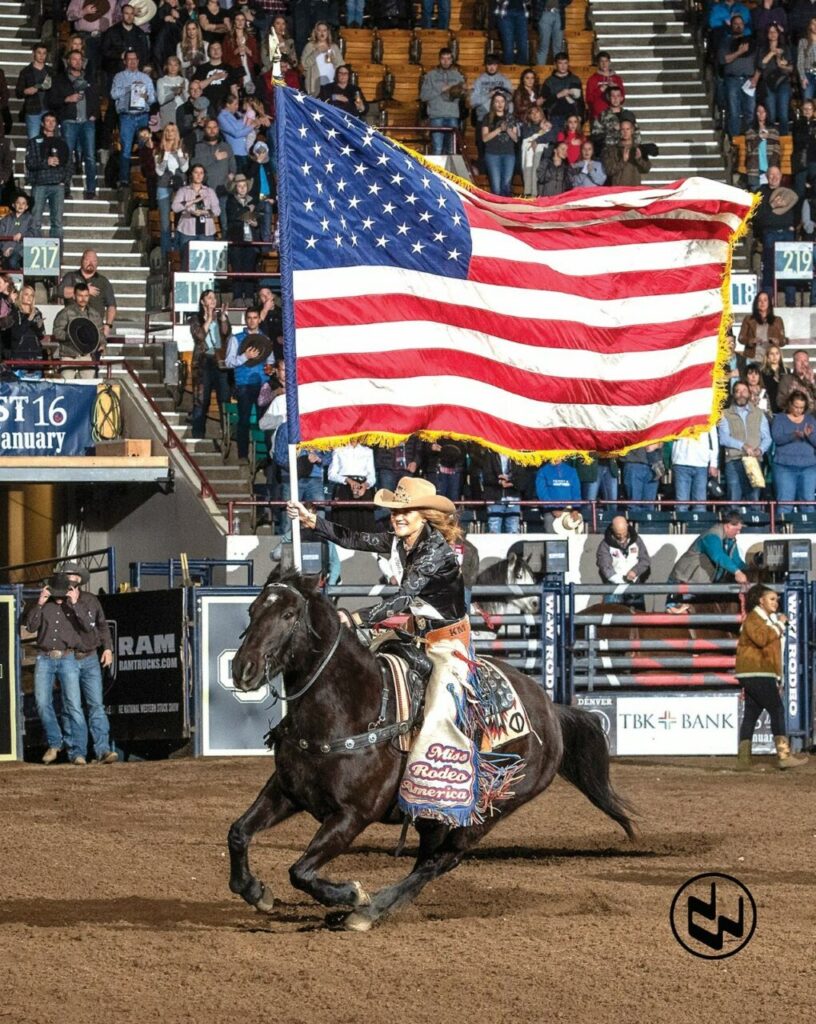
Sometime, maybe a little two-step down the road, cowpokes coming to Denver will be doing what cowpokes do — bull riding, barrel racing, bronco busting — but in a new and gussied-up playground. First, Denver voters need to approve a new arena on the National Western Stock Show (NWSS) campus on election day: question 2E on this year’s ballot. A ‘no’ vote would mean any cowpoking to be done will be done at a perhaps not-so-gracefully aging Denver Coliseum.
While the November 2nd vote will determine the fate of the proposed arena, an August Denver City Council meeting made it evident that a new facility is not the highest priority for some long-time residents living near the NWSS campus, especially older Latino residents. Nor was it evident in the votes of four council members. Candi CdeBaca, Paul Kashmann, Robin Kniech, and Amanda Sandoval each voted no on the proposed $190 million complex being added to the ballot.
Councilwoman Candi CdeBaca, who represents Council District 9 where the NWSS has called home for generations, not only voted no, but “hell no!” on adding the arena to the November ballot. She noted that not one member of her district testified for the proposed facility. “This is the most marginalized community and the most impacted for these projects.”
The four were outvoted by a council majority on the issue, who wanted to see the issue put to voters.
“I very much like it (the arena),” said Denver City Councilwoman Debbie Ortega who not only voted in the affirmative but who also believes it will ultimately benefit not just Denver but the entire Front Range. “The arena will have year-round activities…and will be an economic driver.” Ortega, one of two at-large council members, also expressed confidence that the NWSS’s 1909 building’s transformation into a public market will be a welcome and overdue addition to the three neighboring communities. Likening it to Seattle’s Pike Place Market, Ortega said it will provide easy access to “healthy food,” a current challenge for locals who must travel miles to full-range grocery stores. Upgrading the facility, Ortega said, is “an investment in Denver.”
Community members are also taking sides.
“Why should my community,” wrote Alfonso Espino, a long time resident of Elyria in a Denver Post editorial, “entrust our futures into this administration’s decisions when all the promises from the past few years have been broken or ignored?” Espino represents the Coalition Organizing for Health and Housing Justice, a coalition of residents in Globeville, Elyria, and Swansea. The coalition believes that the city and the Mayor have placed their trust in corporations, big business, and institutionalists, well ahead of those living in the area eyed for development.
The arena is just one spoke in the wheel of Denver Mayor Michael Hancock’s $450 million bond measure. Also rolled into the Mayor’s plan is $38.6 million for upgrading or constructing shelters for a growing homeless population; $54 million for various parks projects, including new playgrounds, pools, and athletic fields; $63 million for significant upgrades to city sidewalks, bike lanes, refurbishing of the Morrison Road corridor, creation of an urban downtown trail, and constructing a cultural and arts district.

Should voters approve the arena, it would be one more jewel-in-the-crown of the National Western complex which began a major transformation in 2018. The planned undertaking was overwhelmingly approved by voters in 2015 when ballot measure 2C passed, which also calls for a number of community improvements in Globeville, Elyria, and Swansea. These communities directly abut the 250-acre NWSS campus. It authorizes more than $475 million in city borrowing, the money to be repaid by a 1.75 percent tax on lodging and car rentals.
The NWSS Master Plan also calls for a multi-pronged partnership with Visit Denver, the Western Stock Show Association, Colorado State University, the Denver Museum of Nature, and Science and History Colorado. It also envisions the expansion as a bold step toward creating a year-round education and tourism destination.
NWSS officials and the city have opted for a new arena over renovation of the Coliseum, a 70-year-old facility, for a single reason: costs. “Given the level of funding that would be needed to turn the Coliseum into a year round venue would be a problem,” said Camilo Vilaseca, Campaign Manager for Rise Denver, the organization pushing for passage of the ballot item. Complete renovation would include major retrofitting of new heating and cooling systems, dealing with deferred maintenance, installing a whole new sewer and plumbing system and more.
A new arena, he added, does not mean demolition of the historic arena which has served as home to the long ago Denver Rockets professional basketball team, hosted Colorado High School athletic events, and housed various industrial shows and conventions over the years. Any decision on the facility’s future rests with the city. To date, Denver has made no announcement on the Coliseum’s fate.
One concern voiced by residents of the Globeville, Elyria, and Swansea (GES) communities is that expansion of the NWSS campus and construction of a new arena could mean the beginning of the end of their lives in these northeast Denver enclaves. Gentrification, they worry, might slowly or even quickly move into the place they’ve called home for years.
Vilaseca said there has been no talk about uprooting anyone from their homes, many of which are generational. But, he said, there has been an honest sharing of information on the benefits of how a new arena will pay off for the communities. “We’ve told them about the 3,500 jobs around the construction and renovation of the arena,” he said. There will also be approximately 200 full-time positions at the still to be voted upon arena as well as an undetermined number of part-time jobs. Vilaseca also reiterated the addition of a food market, parks, and a library that will be part of the overall construction package. “We will be giving a lot back to the community and Denver.”
The NWSS, a January staple in Denver and Colorado since 1906, has managed to carry on despite showing its age. Each year the event brings in an estimated 600,000-700,000 vendors, visitors, and competitors for its 16-day run. It’s hoped that its metamorphosis will also make it a year-round landing spot for exhibitions, concerts, and various trade shows. Improvements, started in 2018, have slowly begun giving it to a 21st Century patina.
Long before the idea of a new arena even hit a storyboard, a number of essential improvements began. A number of buildings and amenities that no longer served a purpose were demolished. An equestrian barn, a long abandoned paper manufacturing building and an animal rendering plant that butted up on the South Platte River were razed. Some rail lines have also been redirected to accommodate the renovation and better serve neighboring businesses. Sewer lines connecting the city to a wastewater treatment plant have been buried underground. Going thoroughly 21st century, the plan is for the sewer system to provide heating to various parts of the stock show operation.
Paul Andrews, CEO and President of the NWSS, and one time Executive Vice President of Kroenke Sports, knows better than to take an affirmative vote for granted. Still, he’s confident that voters will see the possibility of jobs, community improvements, and even “careers in arena positions.” But he also knows how other cities, including Chicago, a town that once had one of the biggest stock shows in the world, have fallen short.
Failing to gain the support of voters or the city, Chicago’s once mega-stock show locked its doors and vanished. “I don’t see that happening here,” said Andrews. The NWSS executive said his team has engaged in long-standing meetings with community members. “We formed a citizens advisory committee,” in order to find out what would best work for them, he said. Now and long after what he hopes will be an affirmative vote, “we’re confident that we’ll continue talking with them.”
Listening to your audience, said Matt Brockman, Communications Manager of the Fort Worth Stock Show and Rodeo is what has kept the Texas event vibrant and riding a consistently upward trajectory. Creating public/private relationships have also worked synergistically with local and national brands and companies. “The public/private collaborative efforts have been what’s kept them (facility amenities) upgraded and provided for expansion,” he said. The Fort Worth show has formed partnerships with a number of brands including The Will Rogers Memorial Center and Dickies, a name often associated with farming and ranching and the namesake on its arena.
To date, there have been no announcements on naming rights on anything at the NWSS. But in almost every city and venue where there is money to be made in corporate branding, it would not be unthinkable to imagine a corporate name affixed on anything above or below the name or initials NWSS.
As of October 5, the most recent financial filing, “Friends of National Western Stock Show” has raised $510,000 and “Rise Denver” $194,600, both in support of the bonds (though Rise’s total includes a $75,000 contribution from Friends of National Western). “Vote no on the Arena Bond” had raised $725.

Lots of misinformation in this article and it is written in a bias manner. The NWSS is an event not a location. There is so much more happening on the NWC campus than a stock show and rodeo but none of positive changes have been recognized (check out all the wonderful things happening at the Spur! https://docs.google.com/forms/d/e/1FAIpQLSfdkcznPXQyDLfPJotT6GzyIVeh5uoL9Gi103Ffz0uQeNmJFw/viewform). The NWC project involves many people and multiple institutions: “The National Western Center is the product of a shared vision between founding partners from the City and County of Denver, Colorado State University, the Western Stock Show Association, the Denver Museum of Nature and Science, and History Colorado.” There have been no “broken promises” (that’s a lie) and there is no “National Western Complex”. The Denver voters already approved financing via a permanent extension of the tourist tax but the pandemic threw a wrench in funding. There are no plans for “further expansion” at this point in time so that shouldn’t be a concern to anyone. Although I do want to note that this article fails to even recognize those that have already lost their homes and businesses – much less show any compassion for them. “Marginalized Community”? How can you live in the middle of Denver with all our available resources and be marginalized? Are we sure the issue here isn’t utilization of current services? The NWC is in the works to be a world class, world wide campus that supports agriculture, human and animal health and water resources that benefits people no matter where they live and the entire planet! How can anyone be opposed to these goals?